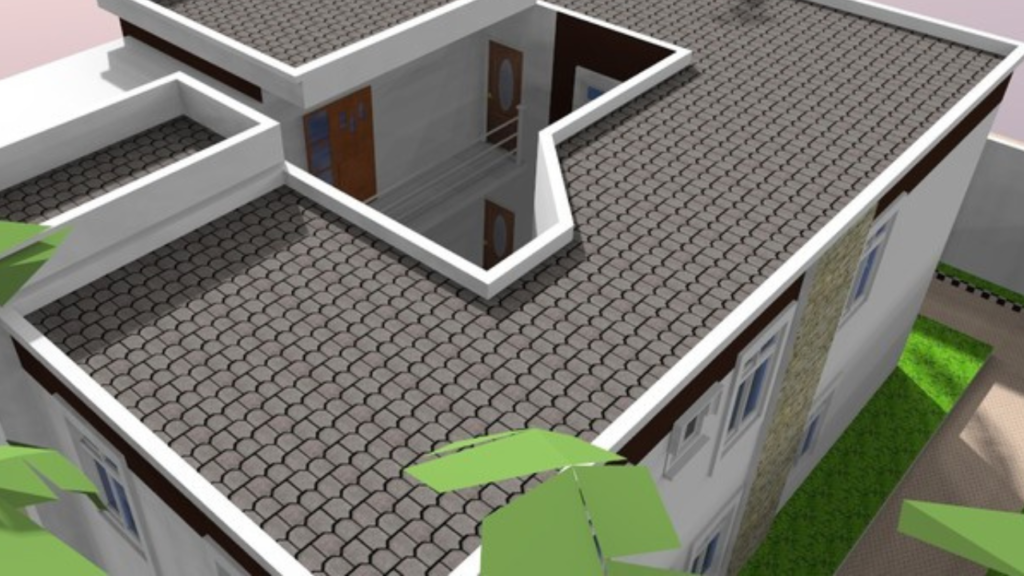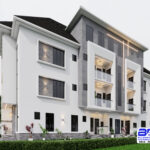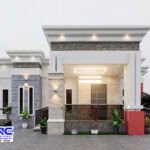Flat roofs are a popular choice for homes, offices, and commercial buildings, especially in urban areas.
They offer practical space for rooftop gardens, solar panels, or even outdoor relaxation.
However, flat roofs are more vulnerable to water pooling, heat, and weather-related wear and tear than sloped roofs.
If you want to avoid frequent repairs and extend the life of your flat roof, here’s what you need to know.
Table of Contents
ToggleSee also – After roofing a house what next | the crucial steps ahead

1. Regular Inspections Are Key
Small problems like cracks, punctures, or blocked drains can quickly turn into major damage if not spotted early.
What to do:
- Inspect your flat roof at least twice a year—preferably before and after the rainy season.
- Look for signs of cracks, blistering, pooling water, mold, and loose materials.
- Hire a professional roofer for detailed inspections if you’re unsure what to look for.
2. Keep the Roof Clean
Debris like leaves, sand, and trash can trap moisture against your roof surface, leading to deterioration.
What to do:
- Sweep your roof regularly to remove debris.
- Clear out all drains, scuppers, and gutters to ensure proper water flow.
- Remove any plant growth immediately to prevent root damage.
3. Address Drainage Issues Promptly
Flat roofs don’t shed water as easily as sloped roofs. Poor drainage causes water to pool, leading to leaks and structural damage over time.
What to do:
- Make sure all drains are unclogged and in good condition.
- If water pools after rain, consider installing additional drains or a tapered insulation system to improve runoff.
See also –
4. Apply Roof Coatings
Protective coatings add an extra waterproof and UV-resistant layer to your roof, shielding it from sun damage, rain, and temperature changes.
See related –
See related – 5 Main Advantages and Disadvantages of Flat Roof Design
What to do:
• Use high-quality elastomeric coatings or liquid-applied membranes.
• Reapply coatings every 5–10 years depending on product specifications and weather exposure.
5. Fix Minor Problems Early
Ignoring small cracks, punctures, or surface bubbles can lead to bigger and more expensive repairs.
What to do:
- Patch up small holes and tears using compatible sealants or roofing materials.
- If a section is severely damaged, replace it quickly to prevent further spread.
6. Control Roof Load
Too much weight on a flat roof (from equipment, water, or even heavy foot traffic) can cause sagging or collapse over time.
What to do:
- Avoid placing heavy machinery or storage items on your flat roof unless it was designed for that load.
- Distribute weight evenly if temporary storage or installations are necessary.
7. Mind the Sun and Heat
Flat roofs absorb a lot of heat, especially in tropical areas. Heat causes roofing materials to expand and contract, which can eventually crack the surface.
See related – 6 Types of Roofing Sheets in Nigeria (trending)
What to do:
- Install reflective coatings or light-colored membranes to minimize heat absorption.
- Consider green roofs (rooftop gardens) if appropriate, to cool your roof naturally.
Conclusion
Flat roofs may be more exposed to the elements, but with routine care and timely maintenance, they can last 20 years or more.
By inspecting regularly, keeping the roof clean, ensuring good drainage, applying protective coatings, and addressing issues early, you’ll not only save money on repairs but also enjoy the full value of your flat roof investment.
Remember, a well-maintained flat roof is not just about longevity, it’s also about keeping your building safe, energy-efficient, and attractive.
Frequently asked questions
What is the best way to maintain a flat roof?
Regular inspections and cleaning to remove debris, along with timely repairs, help prevent damage and extend the roof’s lifespan.
Can coatings improve the durability of a flat roof?
Yes, applying elastomeric or reflective coatings can protect against UV rays and weather damage, enhancing longevity.
How important is drainage for flat roofs?
Proper drainage prevents water pooling, which can weaken the roof structure and lead to leaks.
What materials are best for flat roofs?
Durable materials like EPDM, PVC, or modified bitumen are ideal for flat roofs, offering better resistance to environmental factors.
How often should I inspect my flat roof?
Inspections should be conducted at least twice a year and after severe weather conditions.
Can I repair minor issues myself?
Small cracks or leaks can be patched using sealants, but major repairs should be handled by professionals







